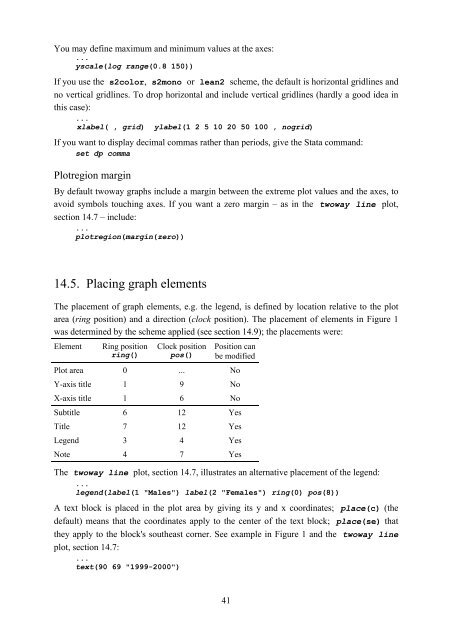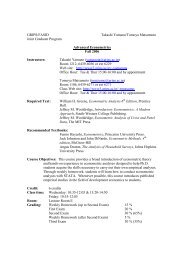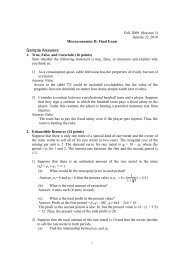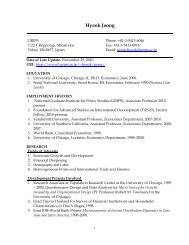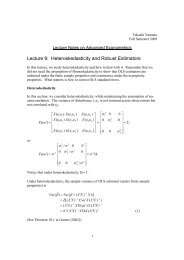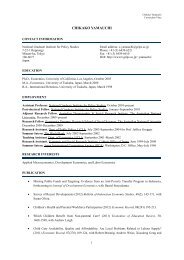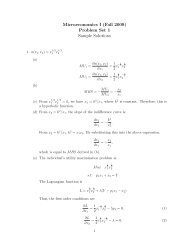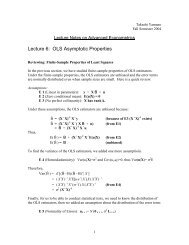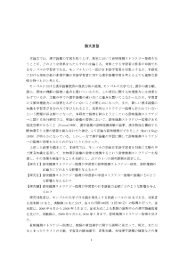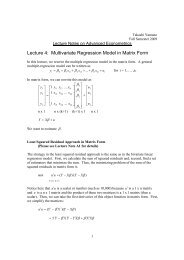Introduction to Stata 8 - (GRIPS
Introduction to Stata 8 - (GRIPS
Introduction to Stata 8 - (GRIPS
Create successful ePaper yourself
Turn your PDF publications into a flip-book with our unique Google optimized e-Paper software.
You may define maximum and minimum values at the axes:<br />
...<br />
yscale(log range(0.8 150))<br />
If you use the s2color, s2mono or lean2 scheme, the default is horizontal gridlines and<br />
no vertical gridlines. To drop horizontal and include vertical gridlines (hardly a good idea in<br />
this case):<br />
...<br />
xlabel( , grid) ylabel(1 2 5 10 20 50 100 , nogrid)<br />
If you want <strong>to</strong> display decimal commas rather than periods, give the <strong>Stata</strong> command:<br />
set dp comma<br />
Plotregion margin<br />
By default twoway graphs include a margin between the extreme plot values and the axes, <strong>to</strong><br />
avoid symbols <strong>to</strong>uching axes. If you want a zero margin – as in the twoway line plot,<br />
section 14.7 – include:<br />
...<br />
plotregion(margin(zero))<br />
14.5. Placing graph elements<br />
The placement of graph elements, e.g. the legend, is defined by location relative <strong>to</strong> the plot<br />
area (ring position) and a direction (clock position). The placement of elements in Figure 1<br />
was determined by the scheme applied (see section 14.9); the placements were:<br />
Element Ring position<br />
ring()<br />
Clock position<br />
pos()<br />
Position can<br />
be modified<br />
Plot area 0 ... No<br />
Y-axis title 1 9 No<br />
X-axis title 1 6 No<br />
Subtitle 6 12 Yes<br />
Title 7 12 Yes<br />
Legend 3 4 Yes<br />
Note 4 7 Yes<br />
The twoway line plot, section 14.7, illustrates an alternative placement of the legend:<br />
...<br />
legend(label(1 "Males") label(2 "Females") ring(0) pos(8))<br />
A text block is placed in the plot area by giving its y and x coordinates; place(c) (the<br />
default) means that the coordinates apply <strong>to</strong> the center of the text block; place(se) that<br />
they apply <strong>to</strong> the block's southeast corner. See example in Figure 1 and the twoway line<br />
plot, section 14.7:<br />
...<br />
text(90 69 "1999-2000")<br />
41


